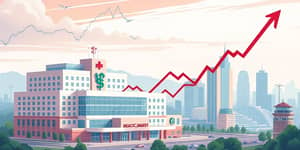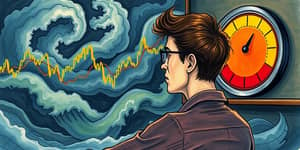
As global markets tremble at signs of economic slowdown, an age-old barometer is back in the spotlight: the U.S. Treasury yield curve. When short-term interest rates exceed long-term yields, the curve inverts, raising alarms among economists and investors alike. This phenomenon, often viewed as a harbinger of downturns, demands both careful analysis and thoughtful preparation.
The yield curve is essentially a chart that plots interest rates, or yields, on government debt across various maturities. Under normal conditions, longer maturities command higher yields to compensate for risk and inflation uncertainty. However, when the graph tilts downward, it forms an inverted yield curve pattern that has historically signaled trouble ahead.
Since the 1950s, every sustained inversion of the 2s10s spread has been followed by a recession within a predictable window. Analysts describe this as a reliable indicator of recessions, with very few false positives.
Between July 2022 and August 2024, the yield curve remained inverted for a record-breaking 784 days, surpassing previous episodes in both duration and intensity. Even though the curve recently “uninverted,” its prolonged stretch at negative levels has stoked fresh concerns about the timing and severity of a potential economic contraction.
At its core, inversion reflects shifting expectations. When investors foresee slower growth or rate cuts, they move capital into longer-dated bonds, driving yields downward. Meanwhile, short-term borrowing costs remain elevated due to ongoing monetary tightening by the Federal Reserve.
An inverted curve is more than an academic curiosity—it can presage potential market downturn. Historically, stocks tend to struggle in the months following inversion, as corporate earnings slow and credit conditions tighten. Businesses may find borrowing more expensive, and consumers might retrench on spending.
Yet this warning signal can also serve as an opportunity. Savvy investors often rebalance portfolios toward quality assets and increase liquidity ahead of a slowdown. Companies can use the window to shore up cash reserves, refinance existing debt, and reassess capital expenditures.
While yield curve inversion is compelling, it isn’t infallible. External factors—like robust foreign demand for U.S. debt—can keep long-term yields artificially low. Additionally, historically low term premiums might distort the predictive power of the curve. Analysts urge a holistic view, combining curve signals with other economic indicators.
Nevertheless, the statistical record is striking: inversions have preceded each of the last eight U.S. recessions, with an average lead time of within six to eighteen months. This track record makes it a critical tool in forecasting economic cycles.
When faced with the ominous slope of an inverted curve, individuals and institutions can take concrete actions to build resilience and prepare for turbulence.
As policymakers weigh rate adjustments and markets digest fresh data, the inverted yield curve remains both a warning and a guide. It underscores the importance of vigilance and proactive strategy in the face of economic uncertainty.
By interpreting this signal thoughtfully—tempering alarm with analysis and action—investors and businesses can position themselves not merely to weather a potential downturn, but to emerge stronger on the other side. In a world of shifting risks and opportunities, understanding the yield curve is a vital step toward navigating uncertain economic times.
References













